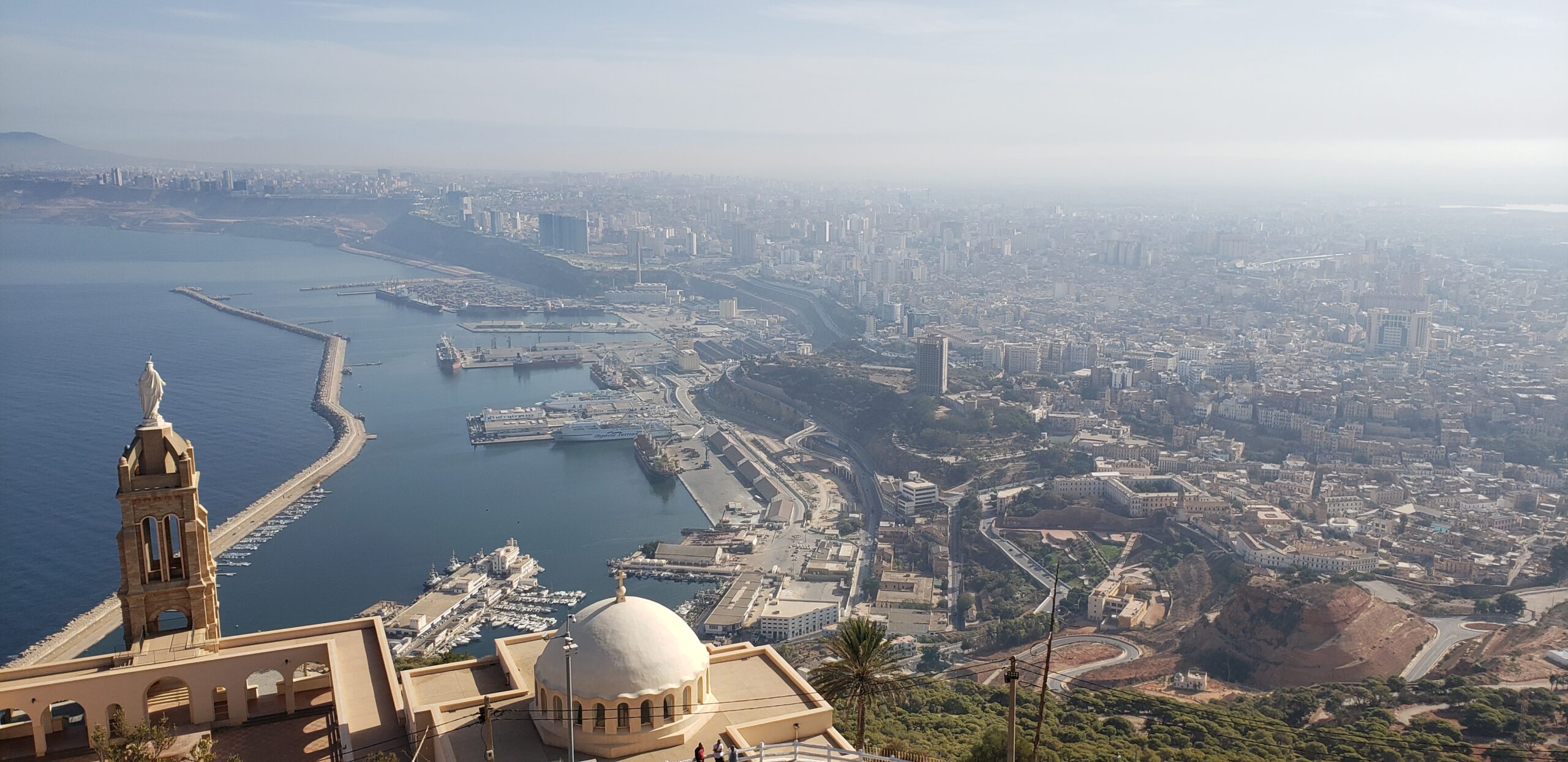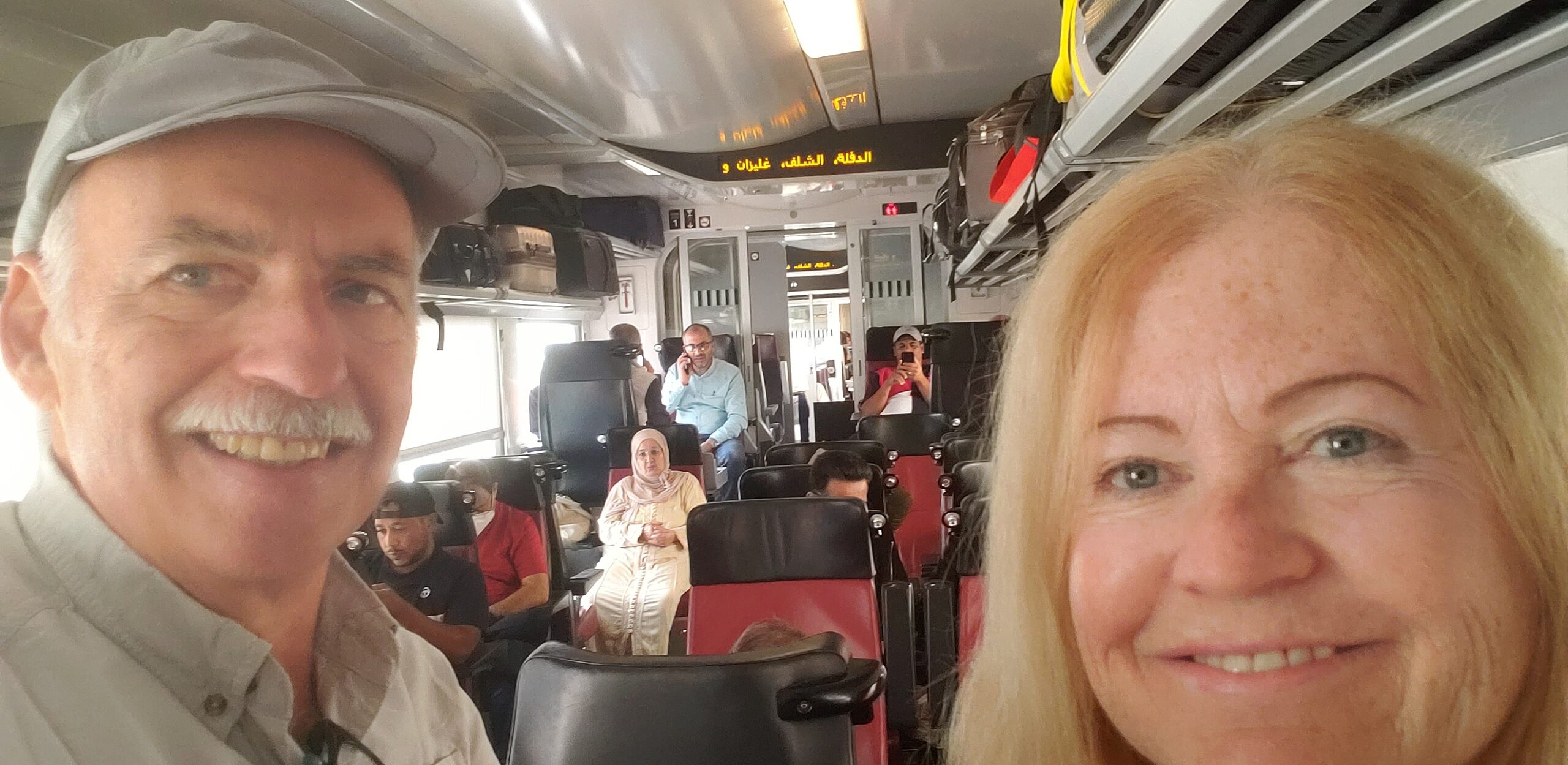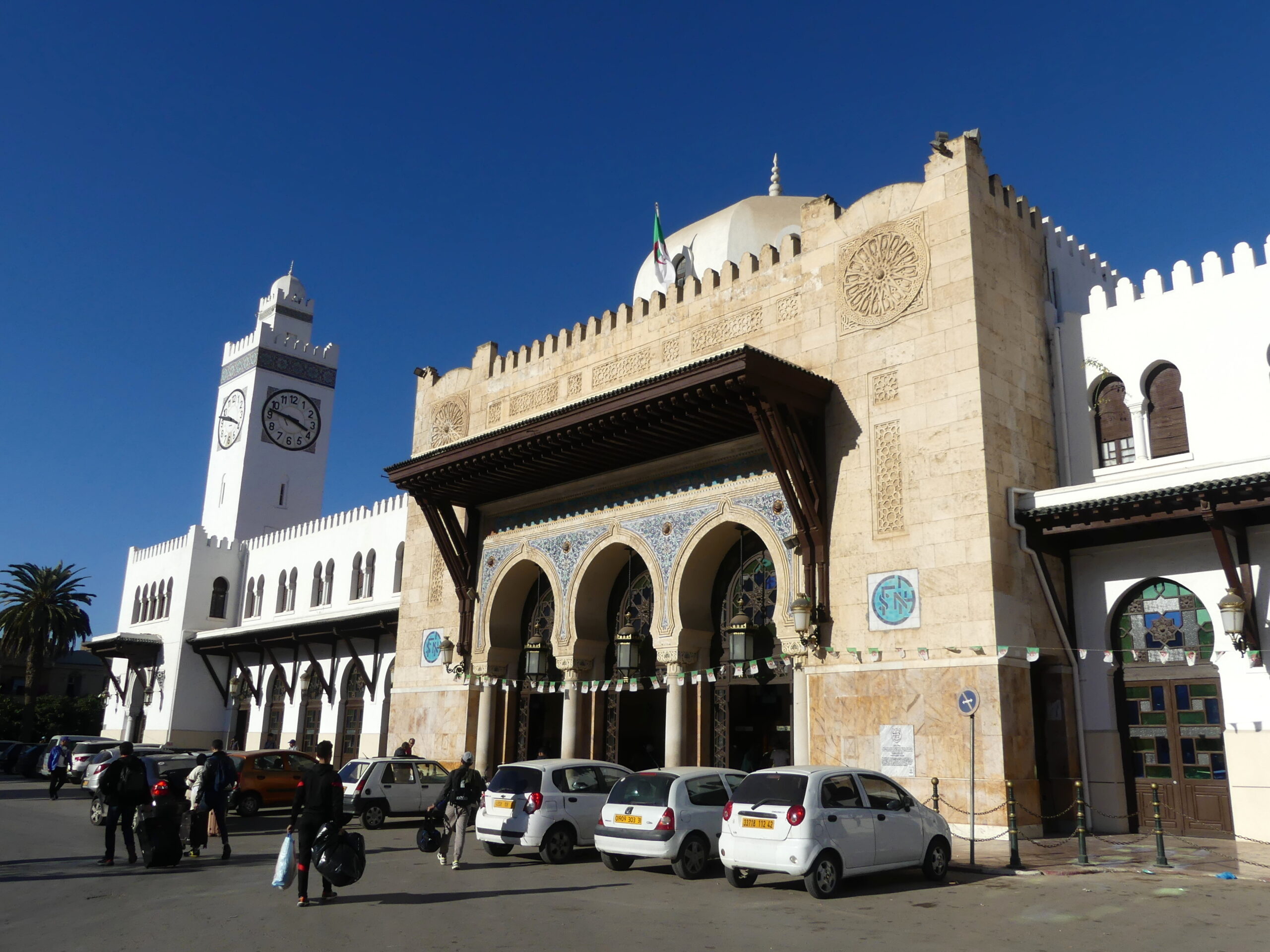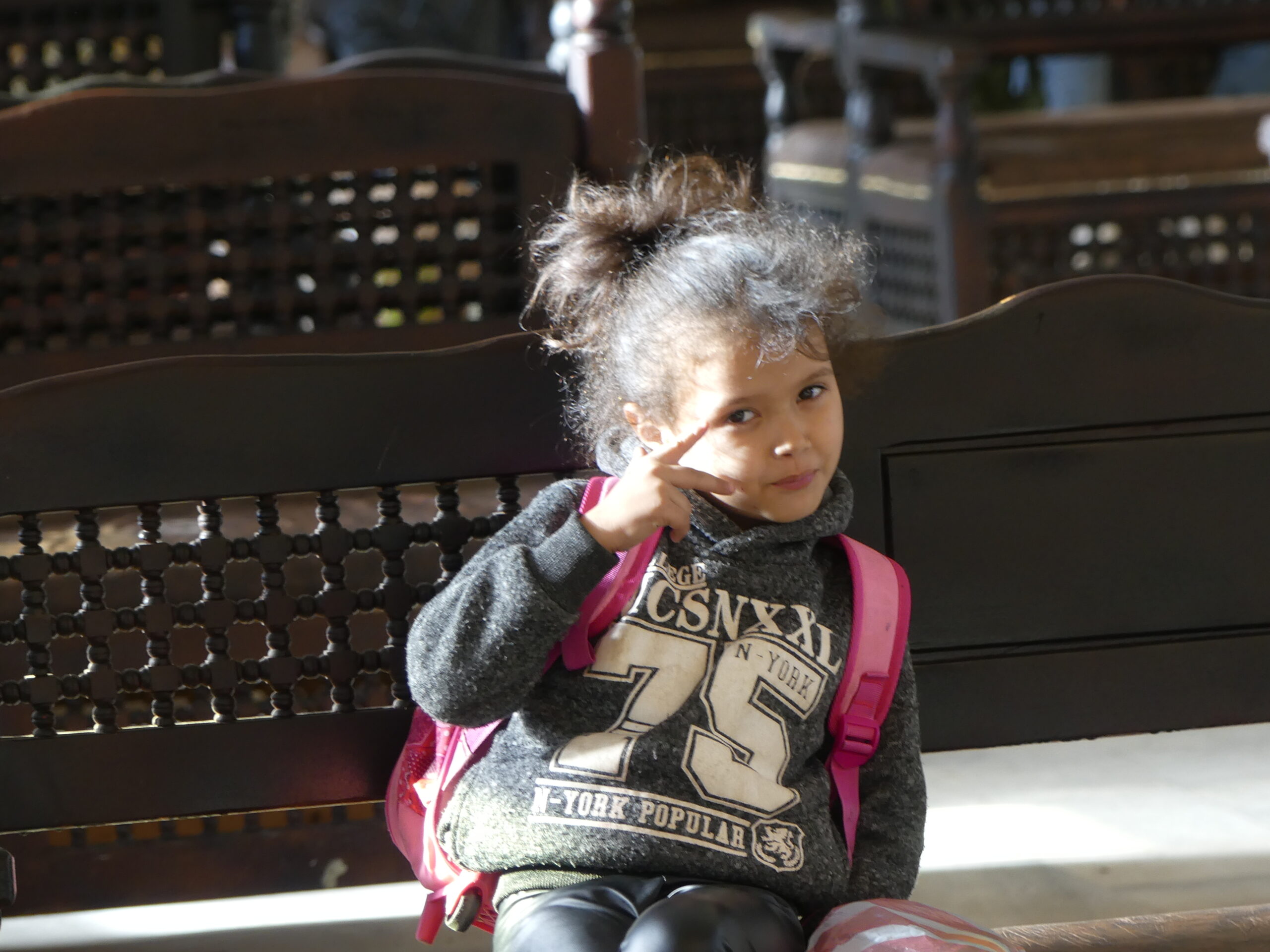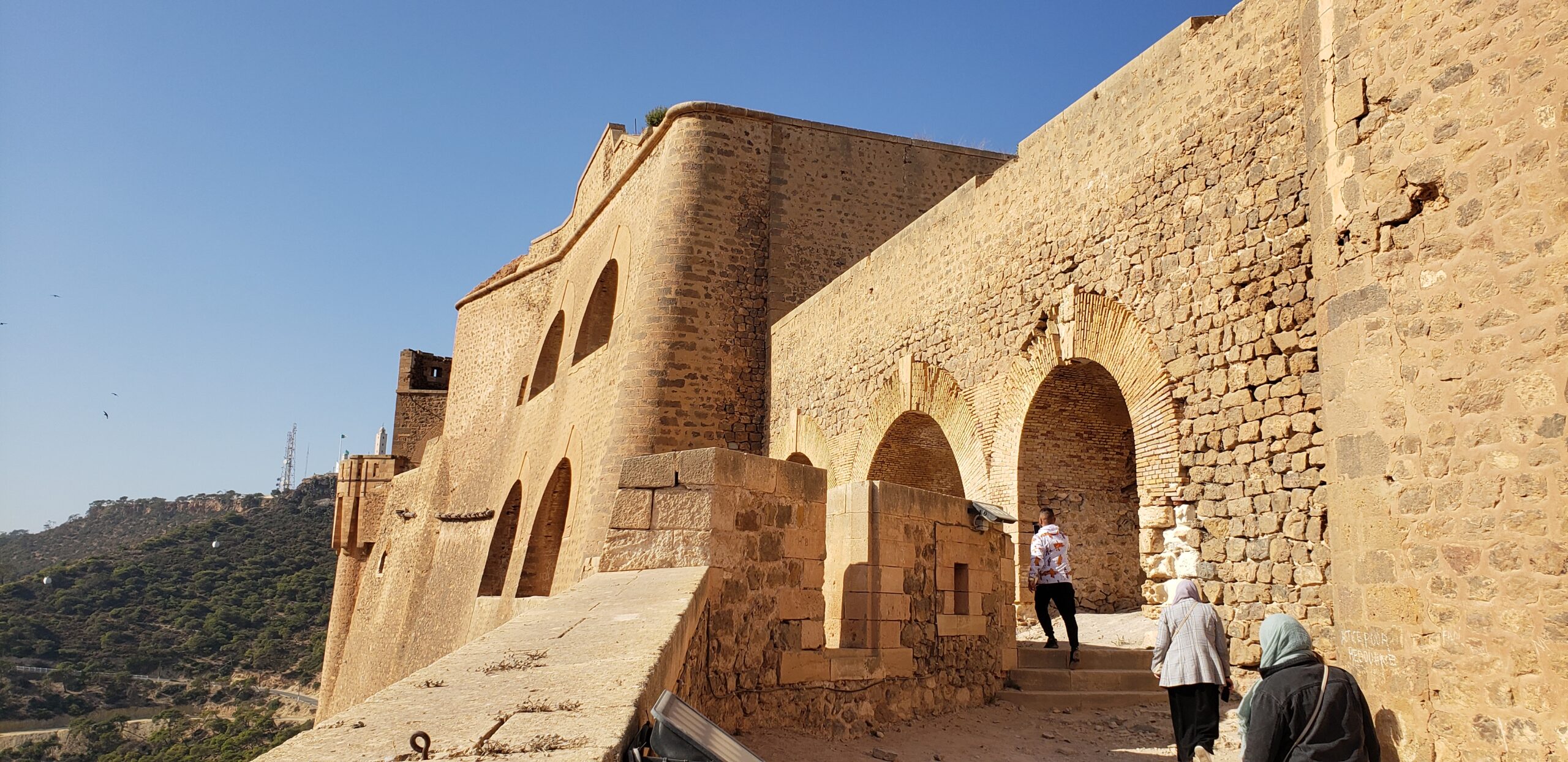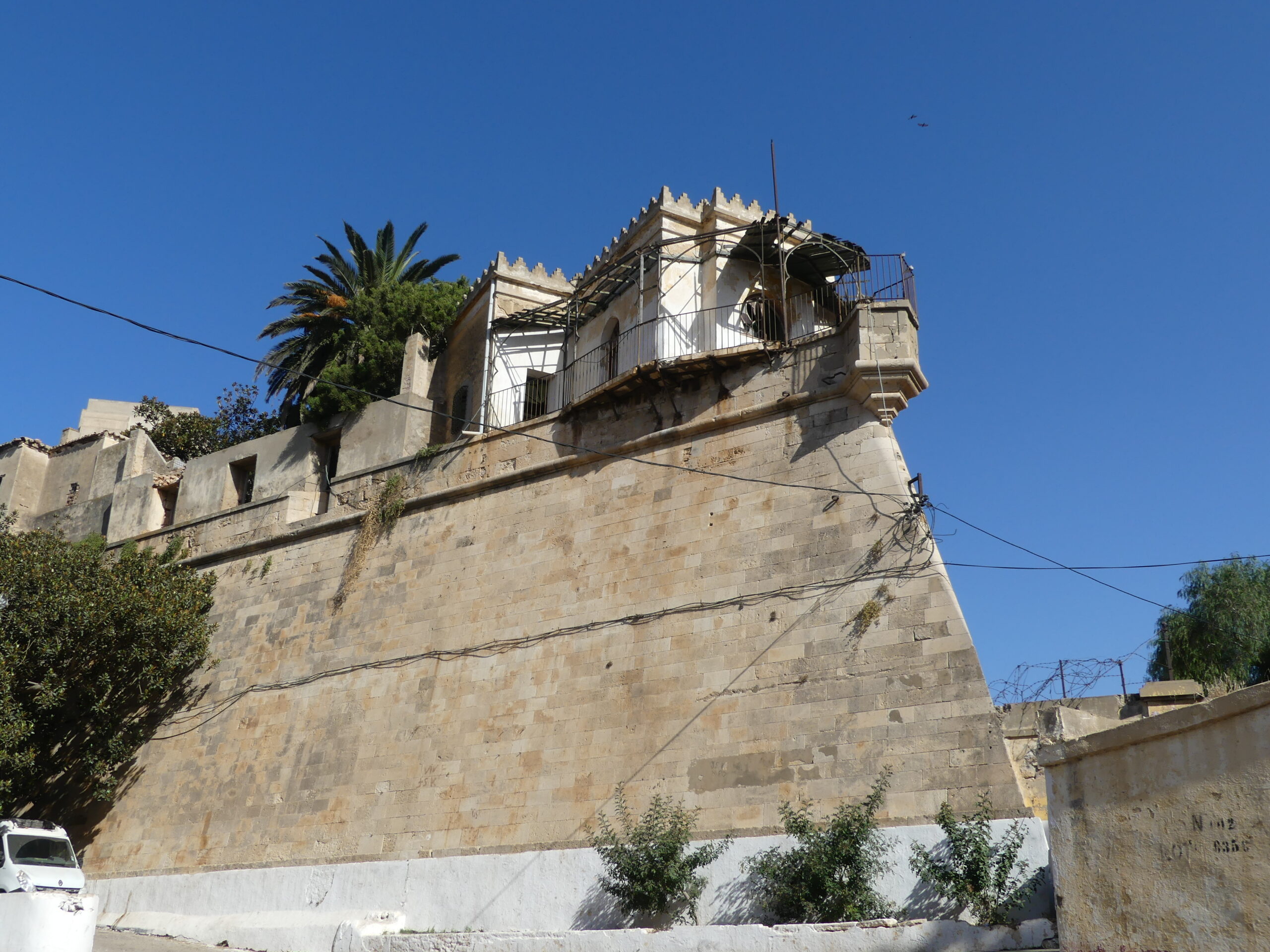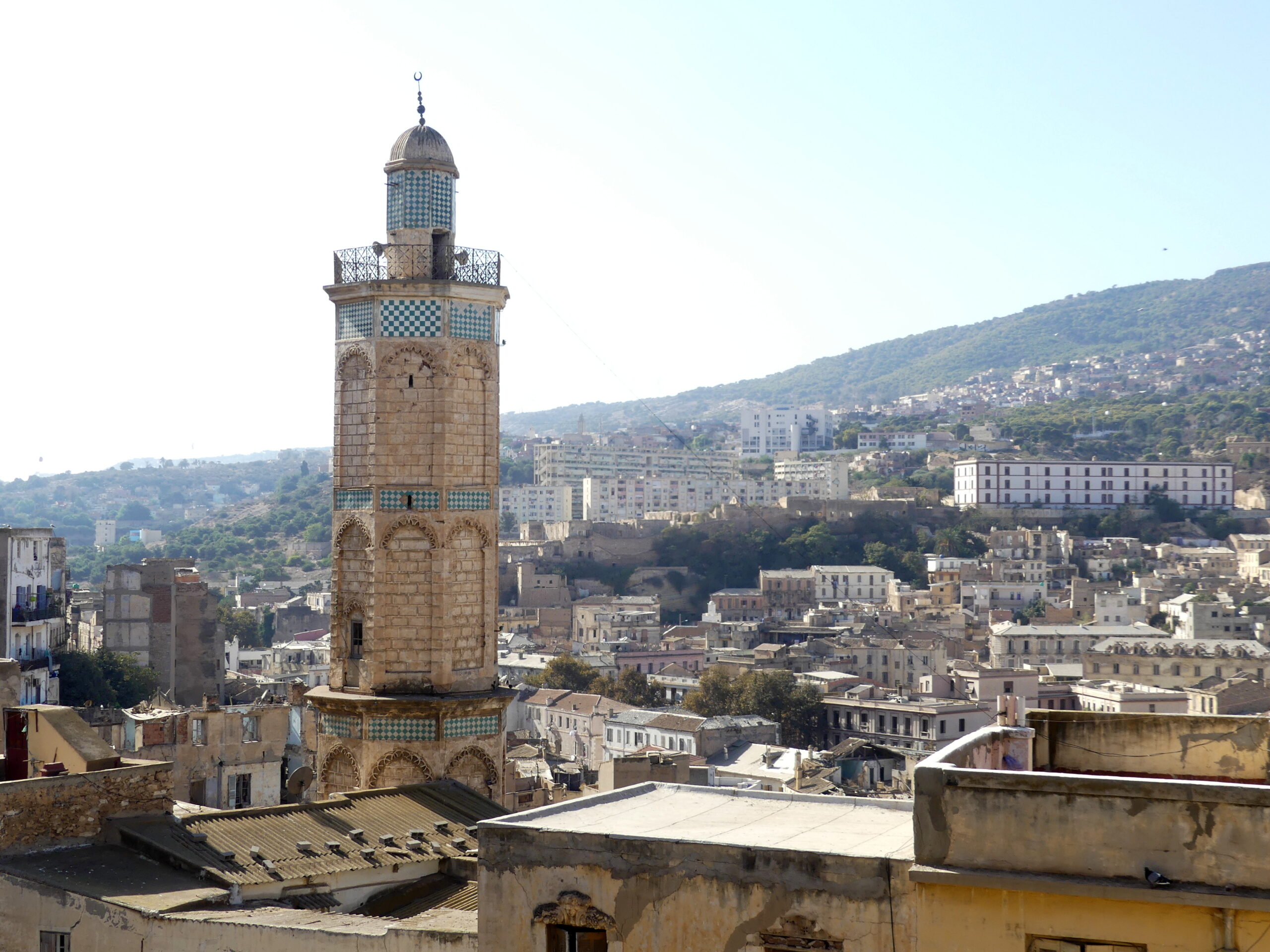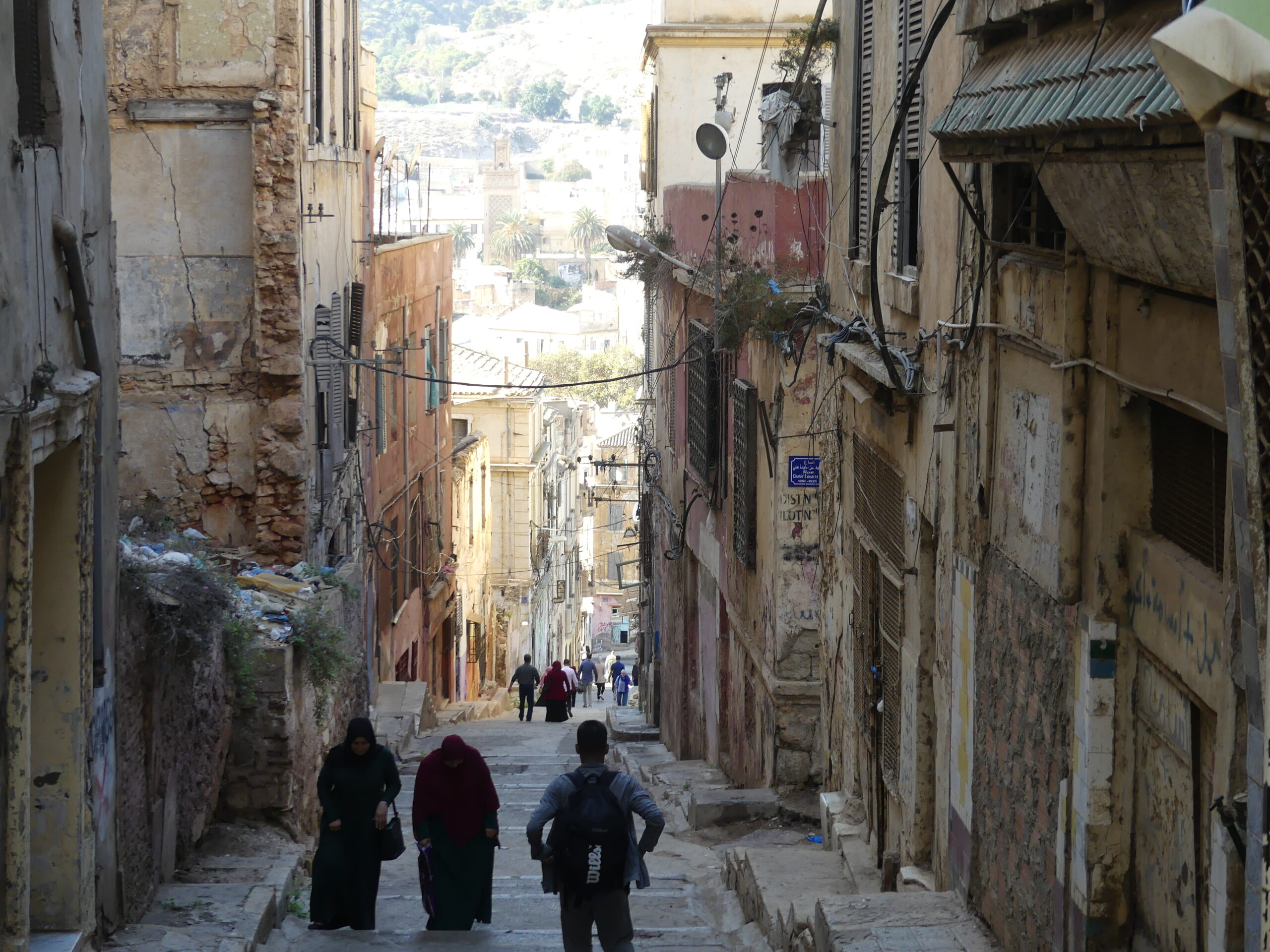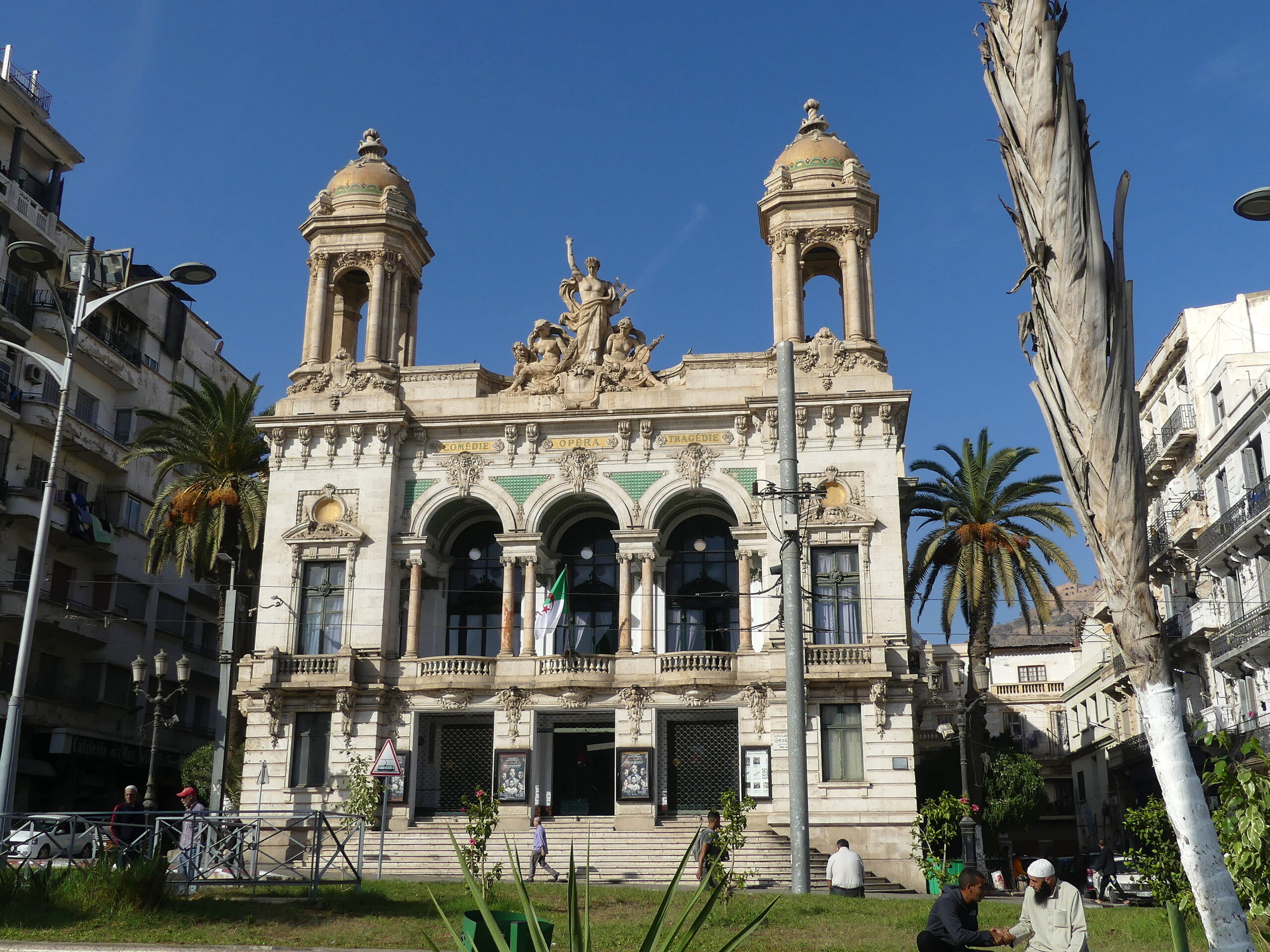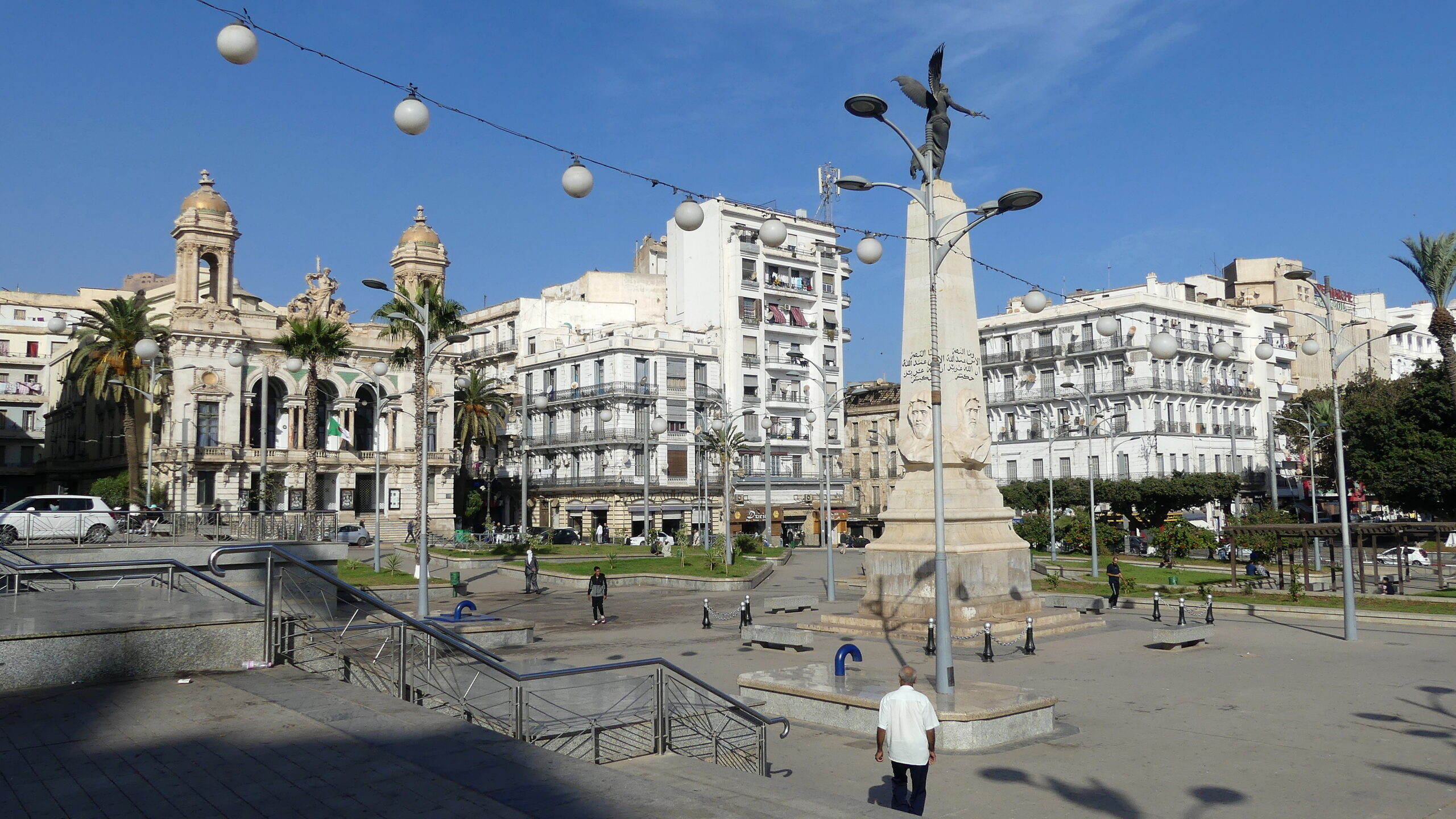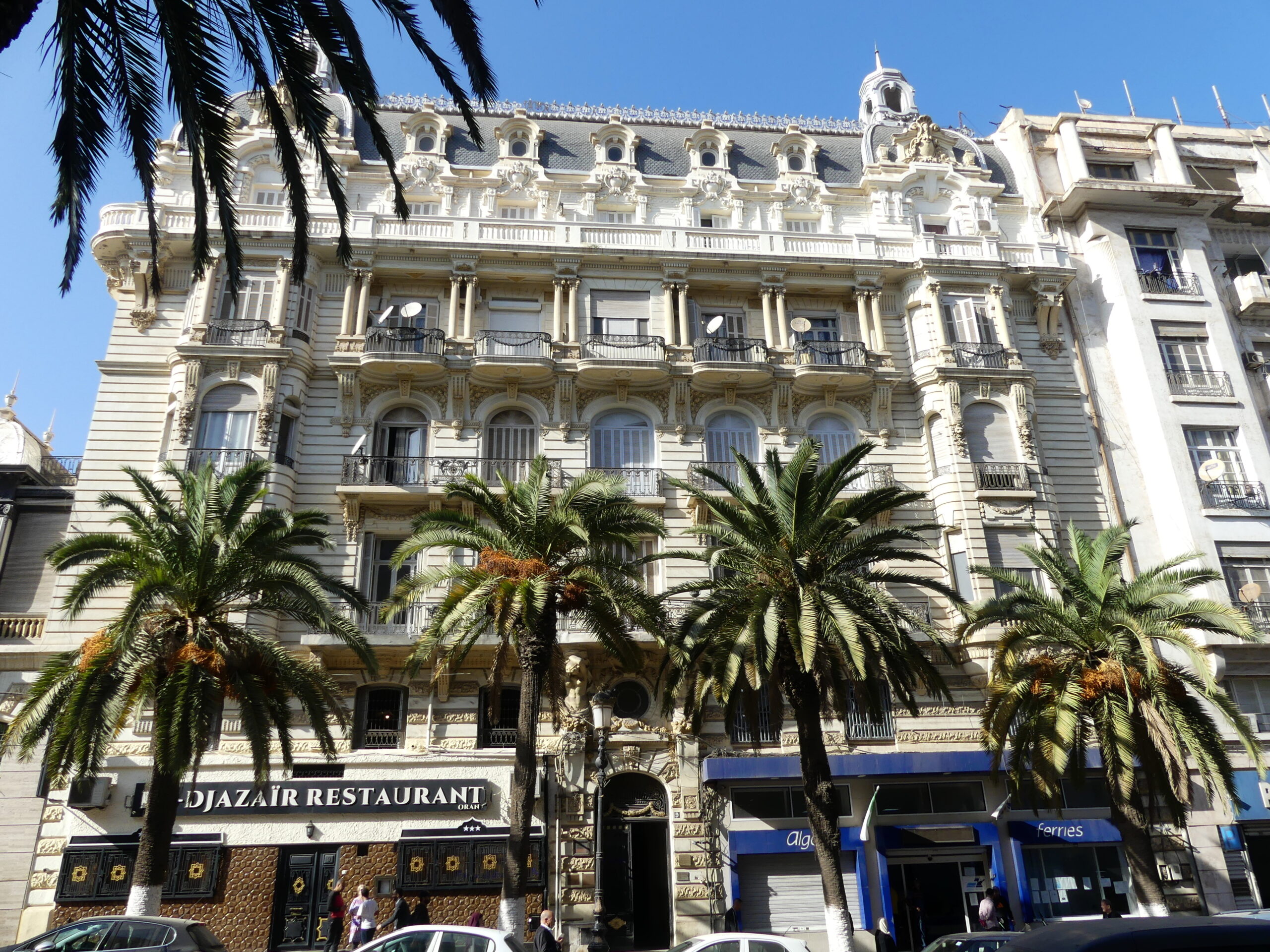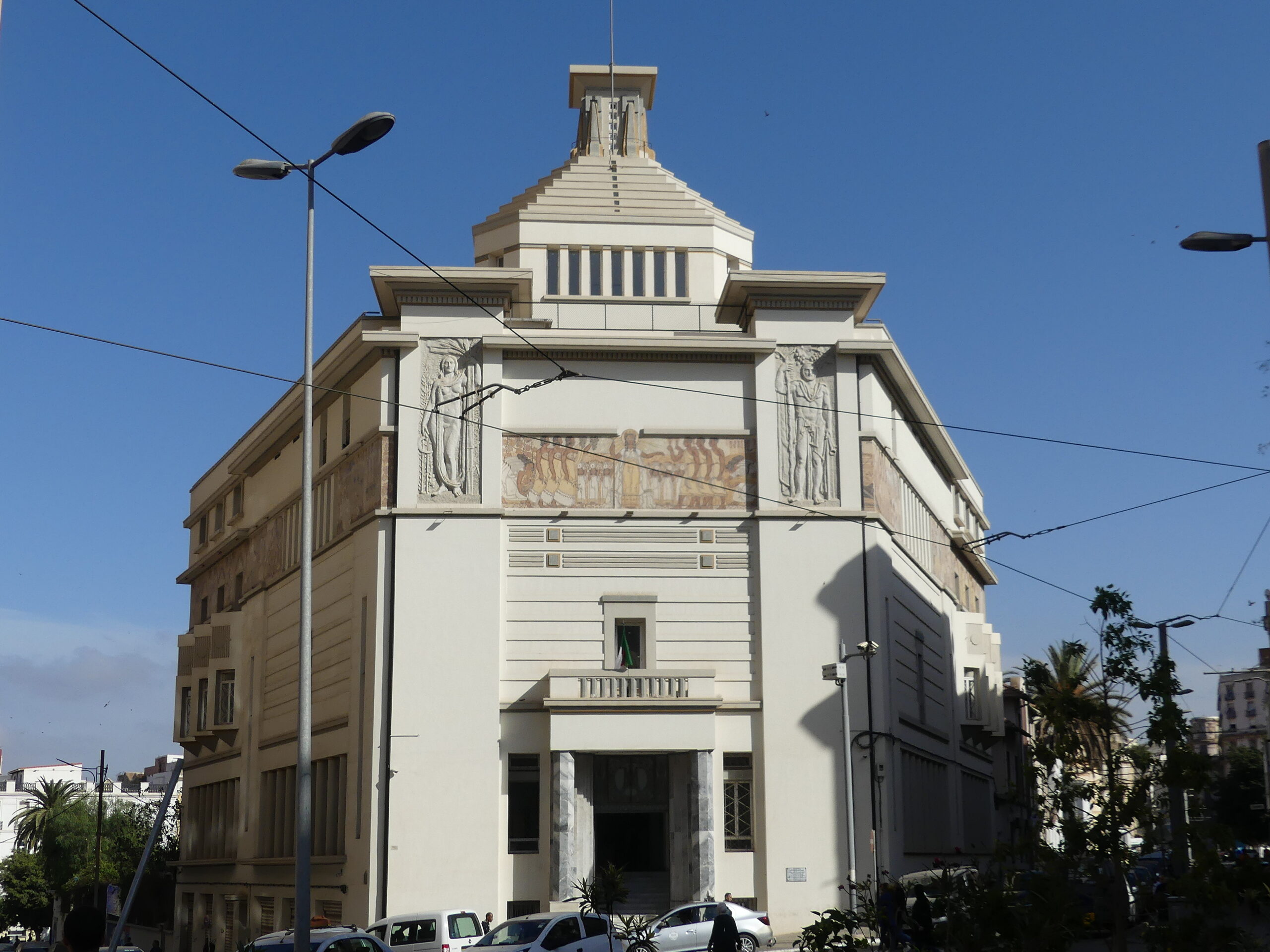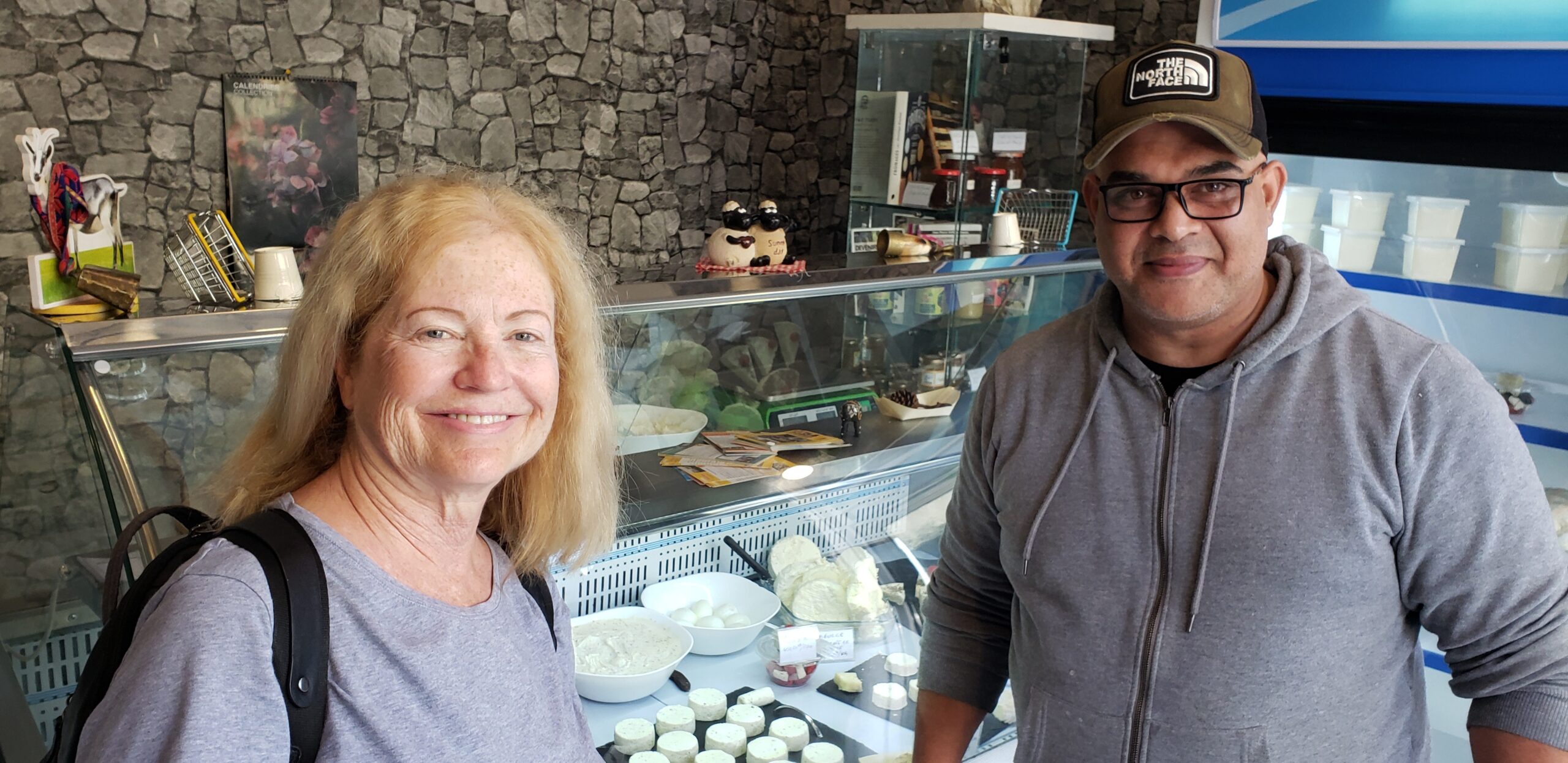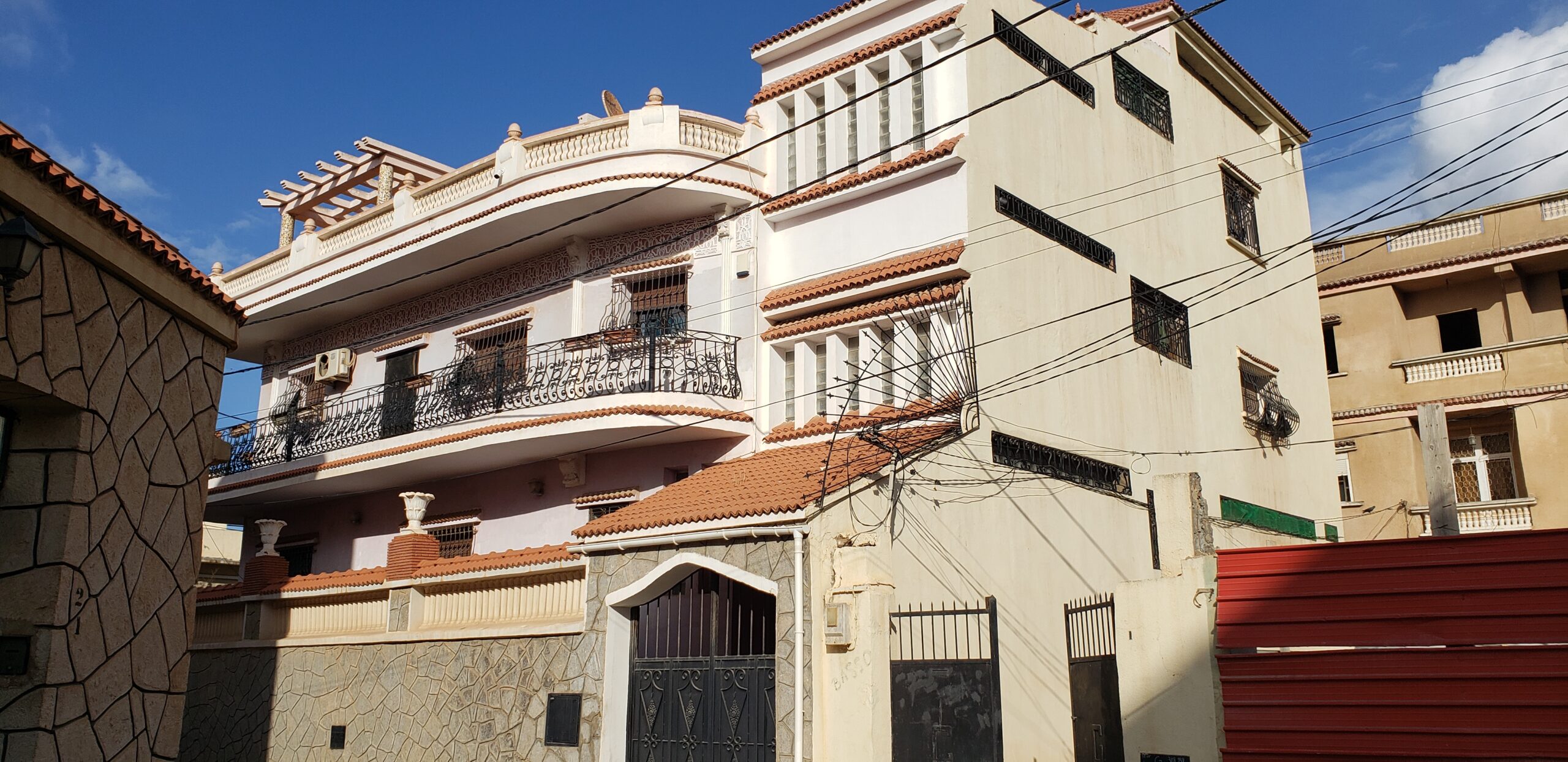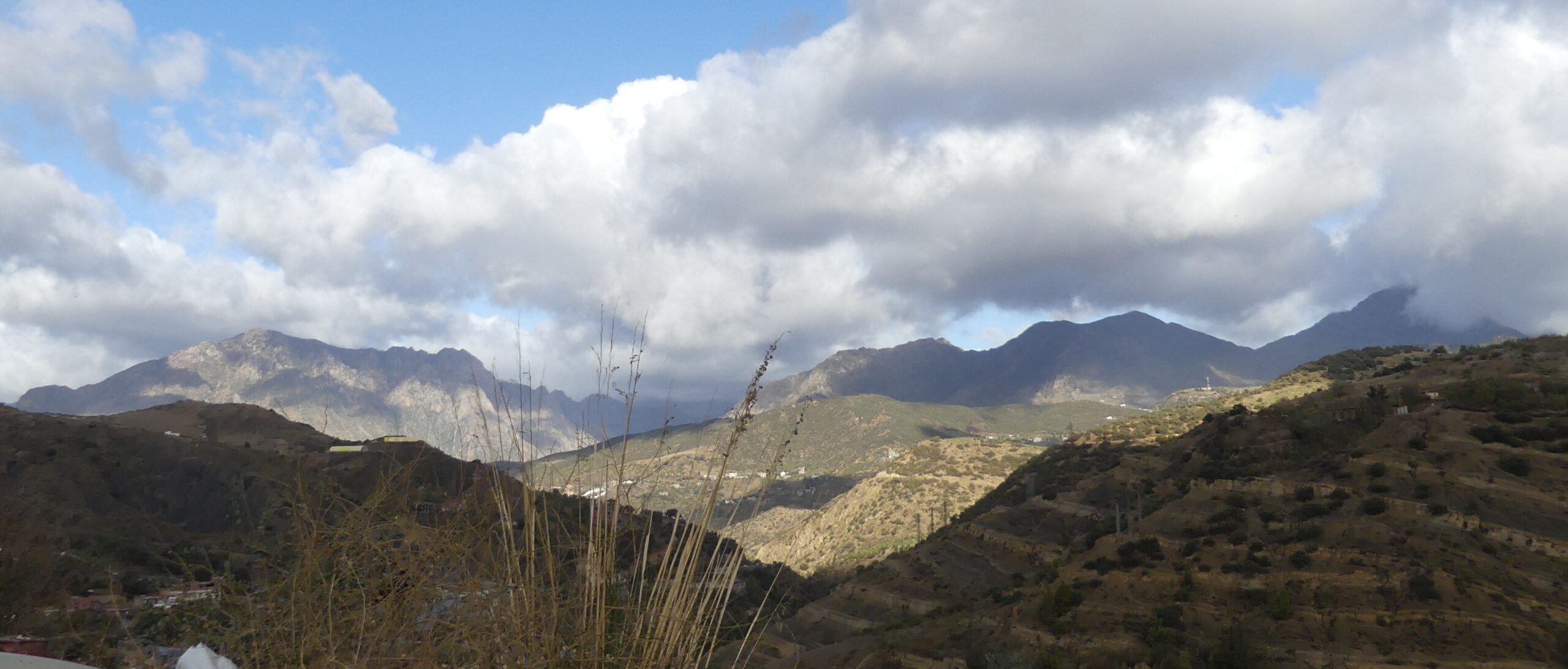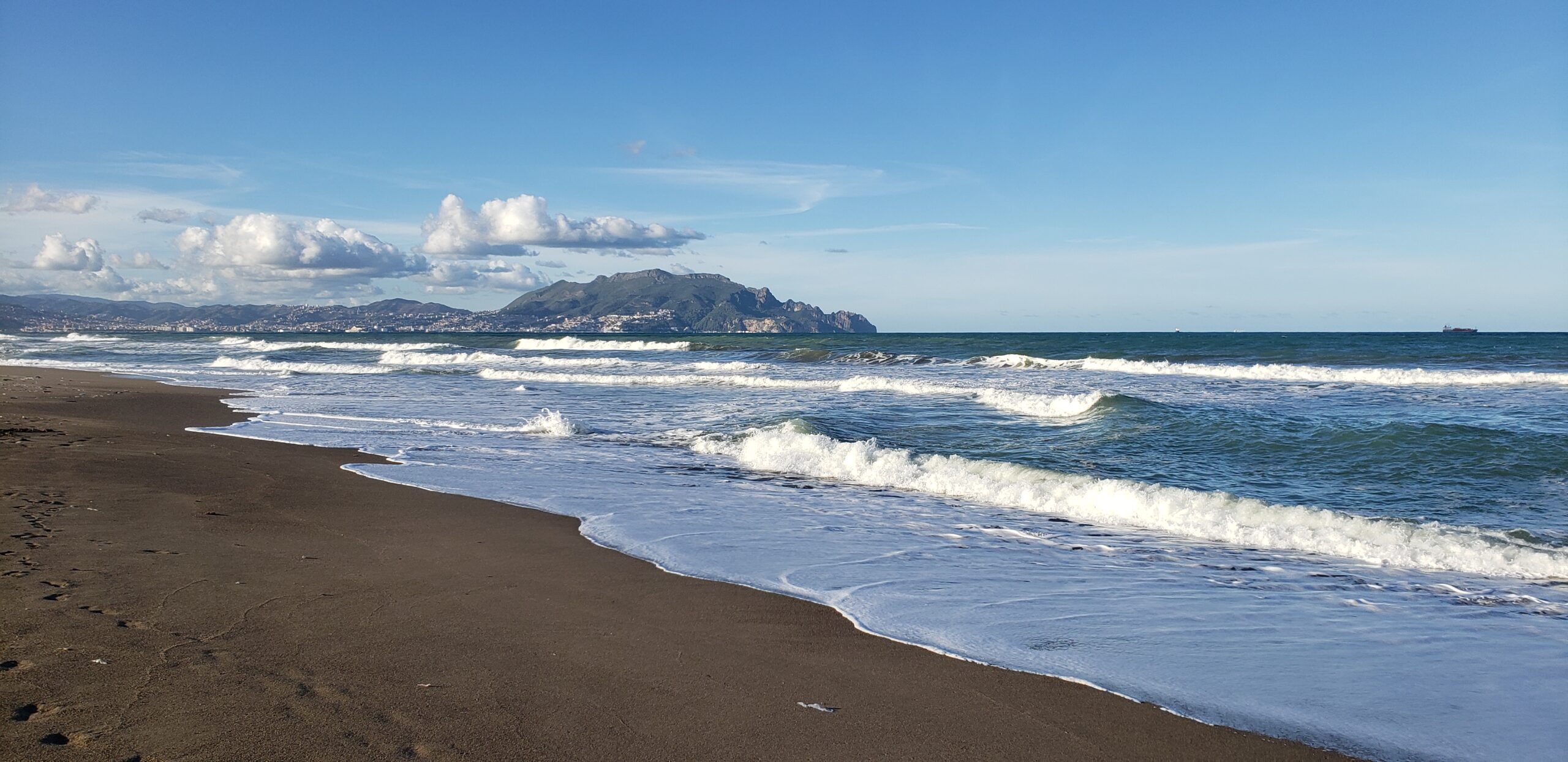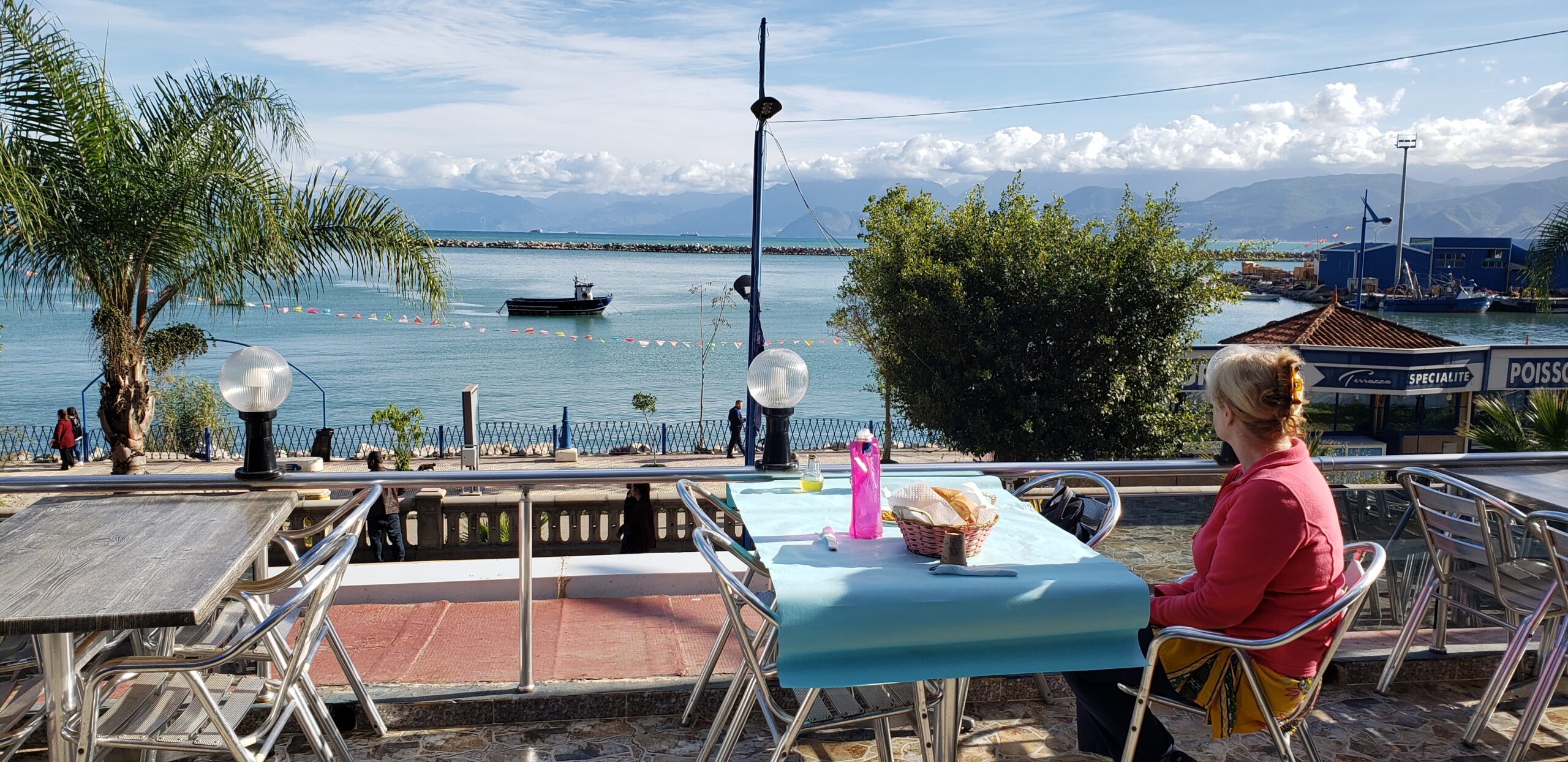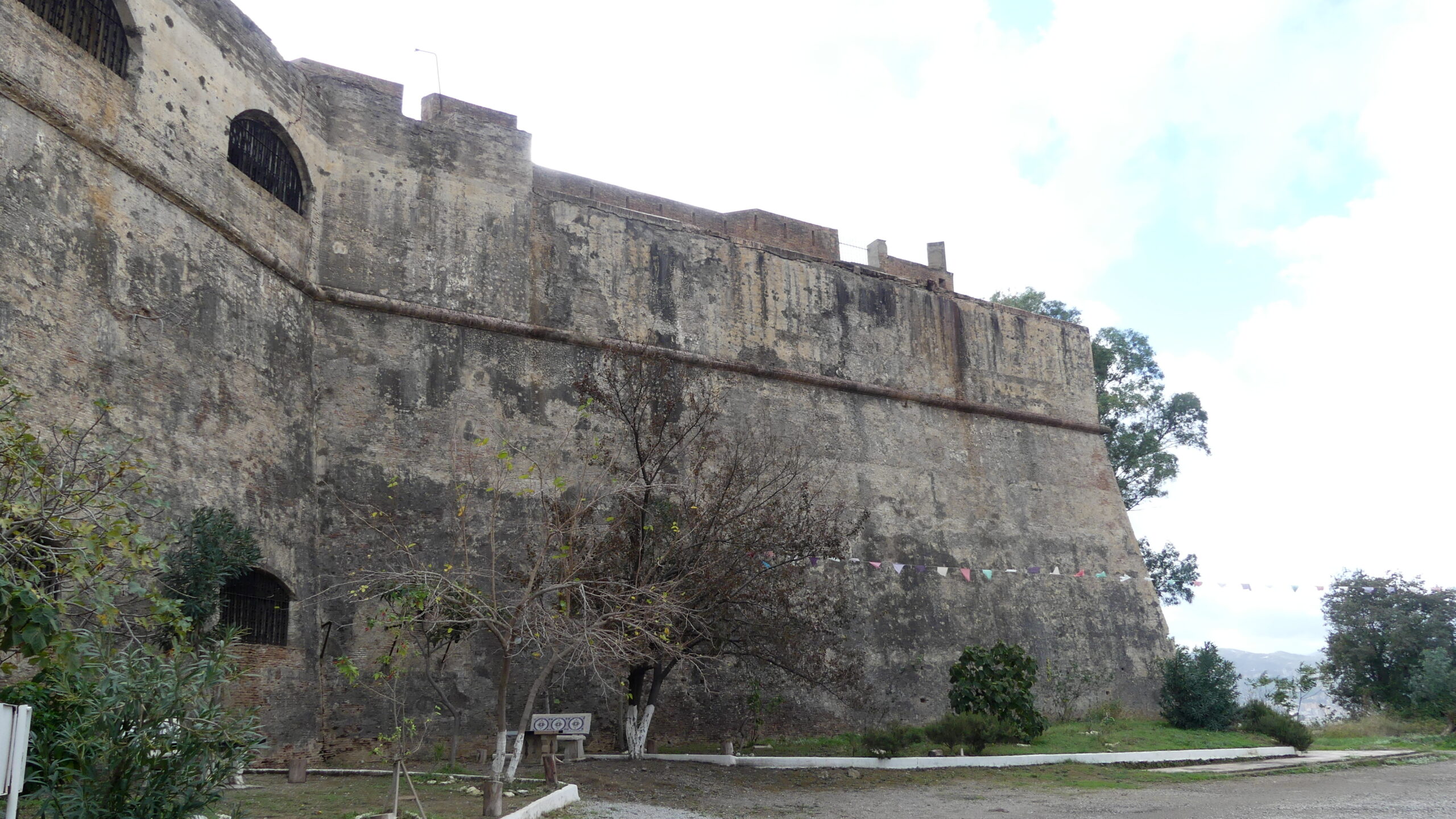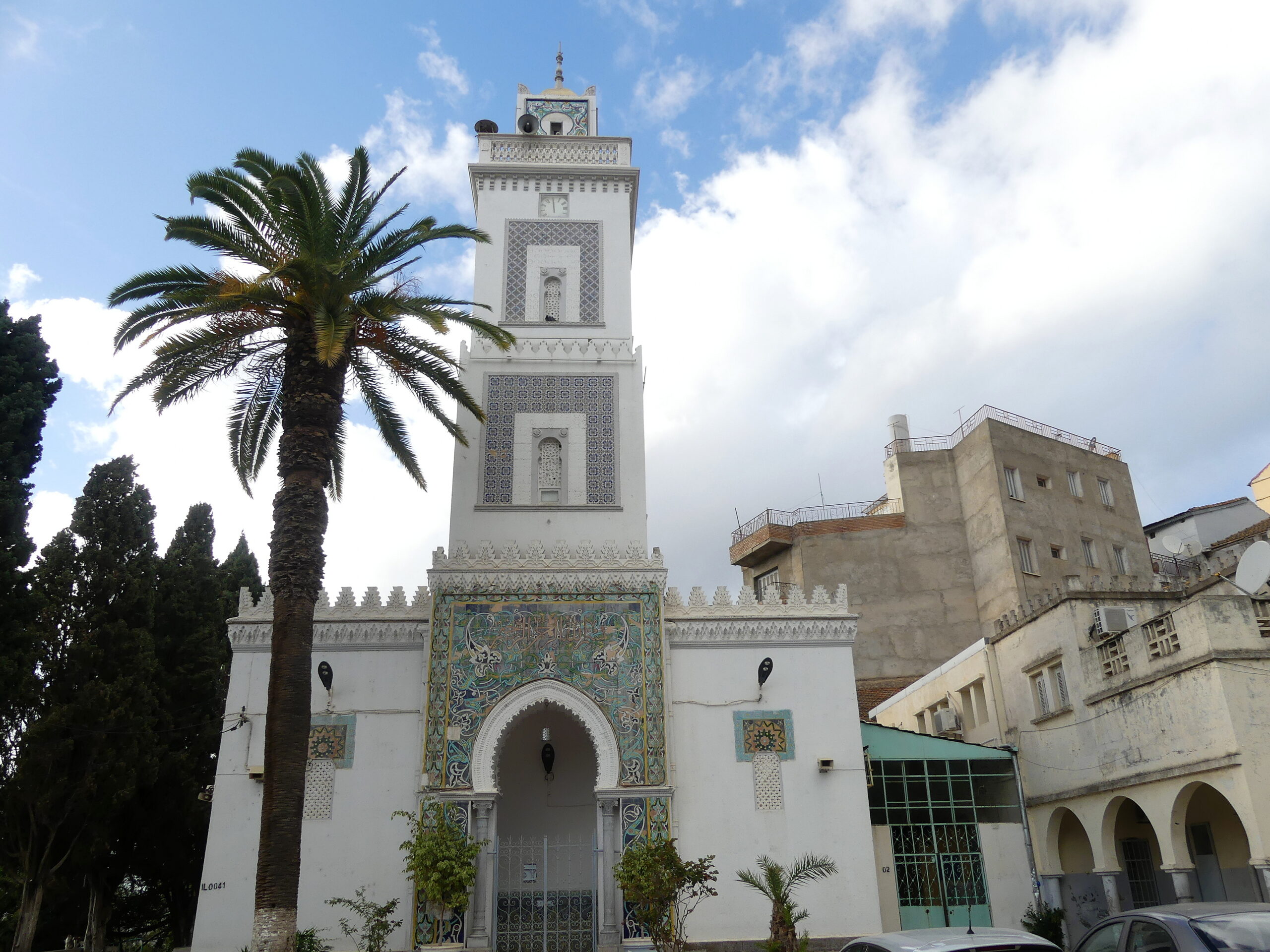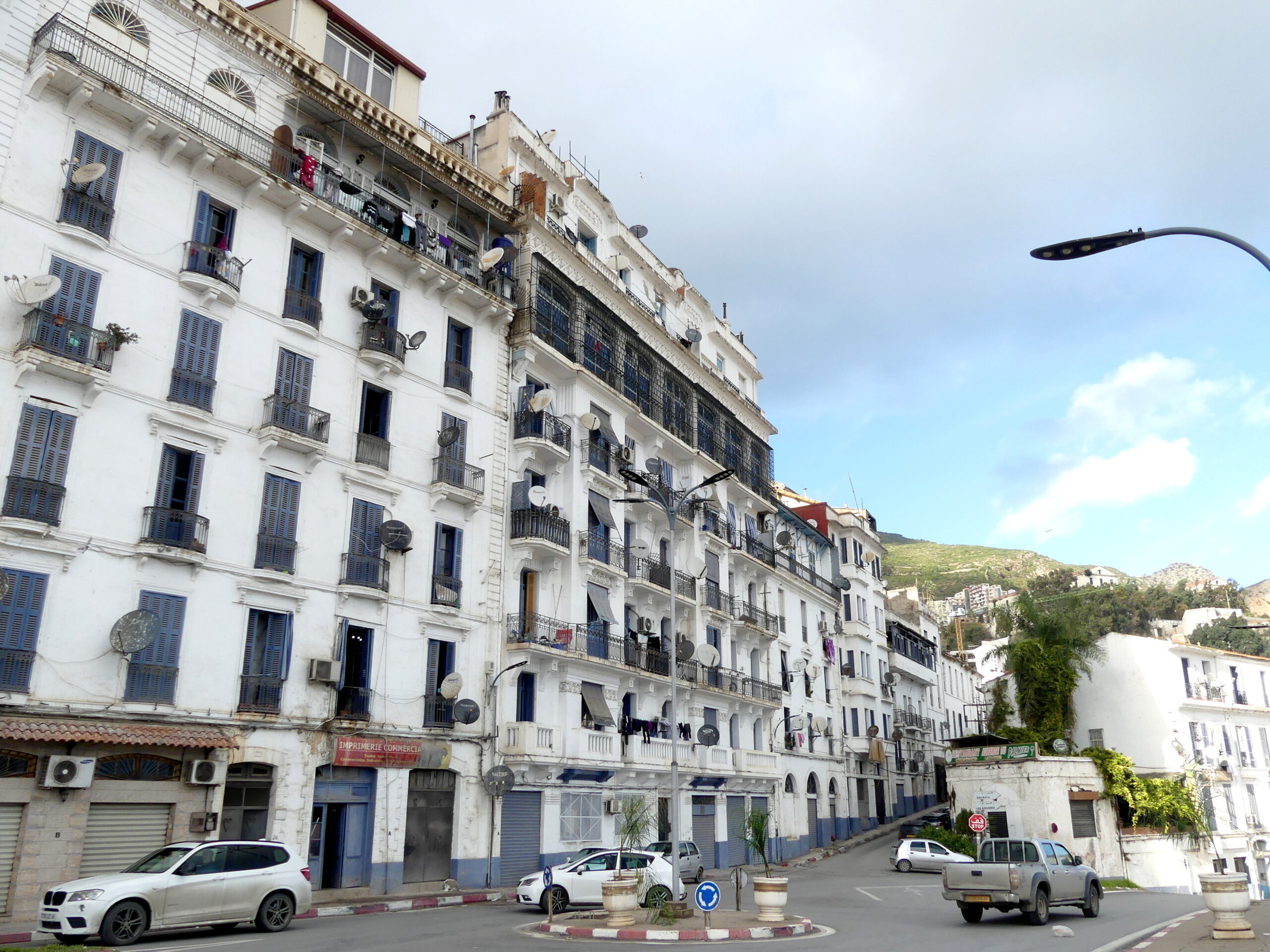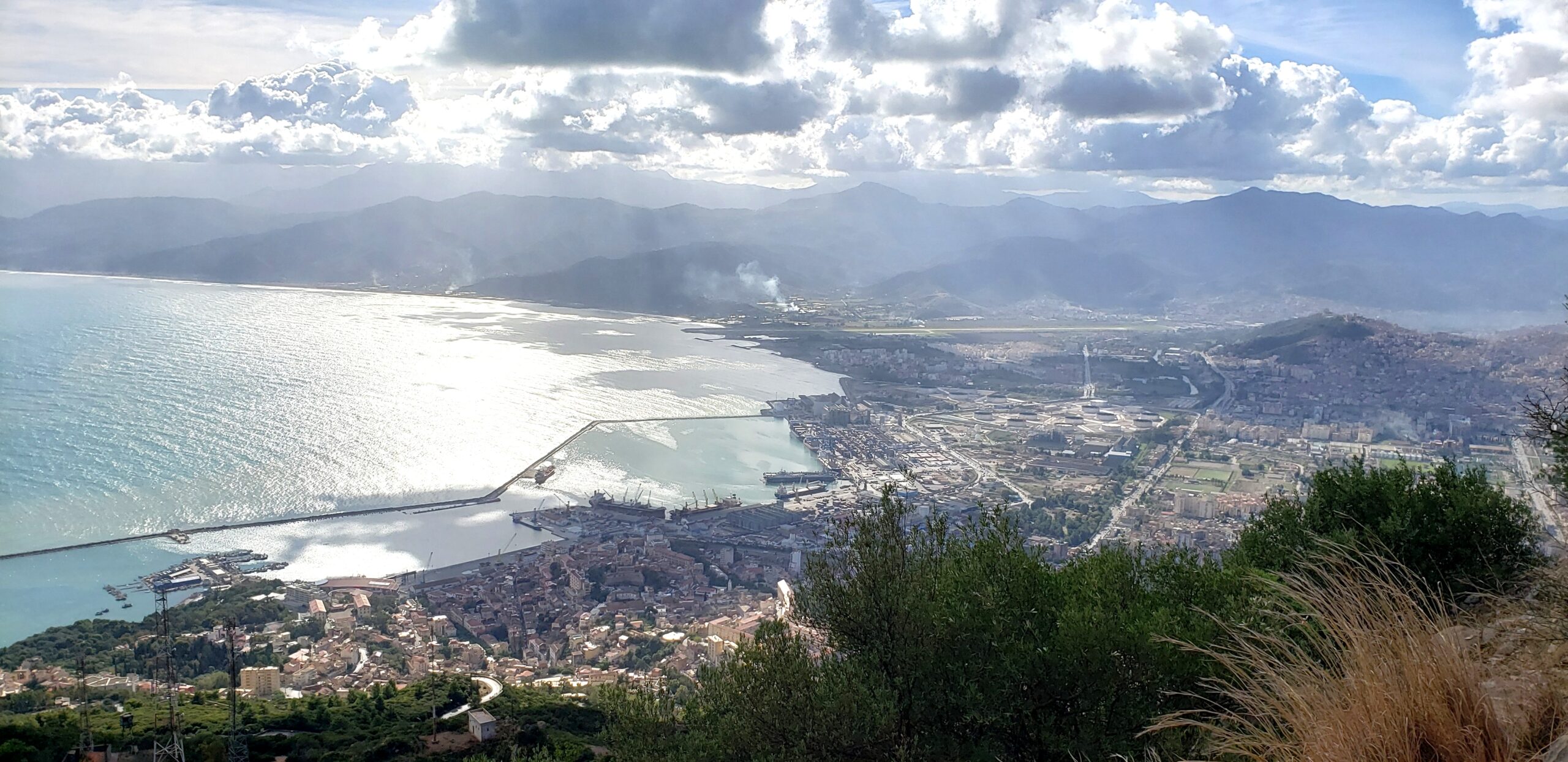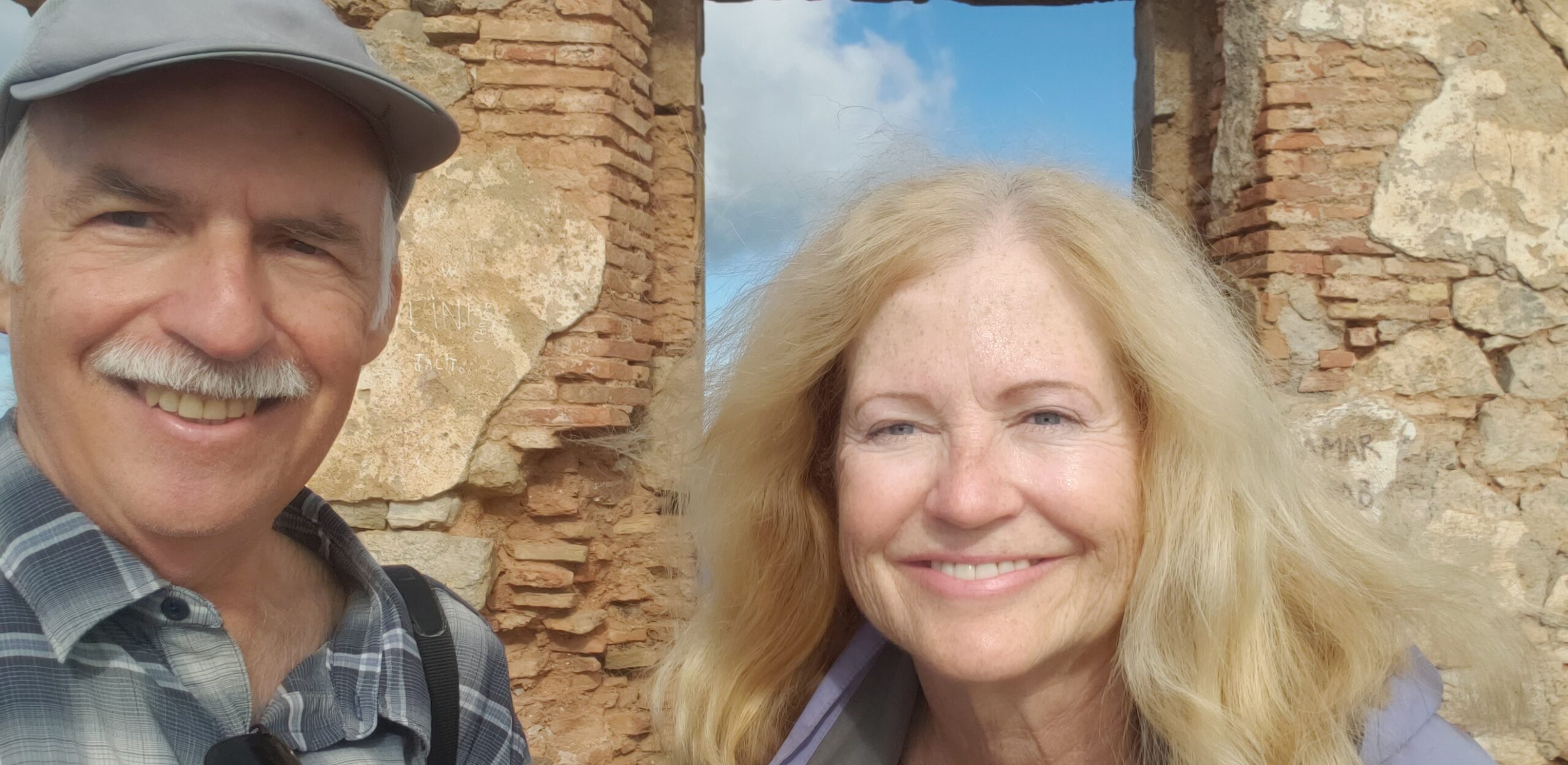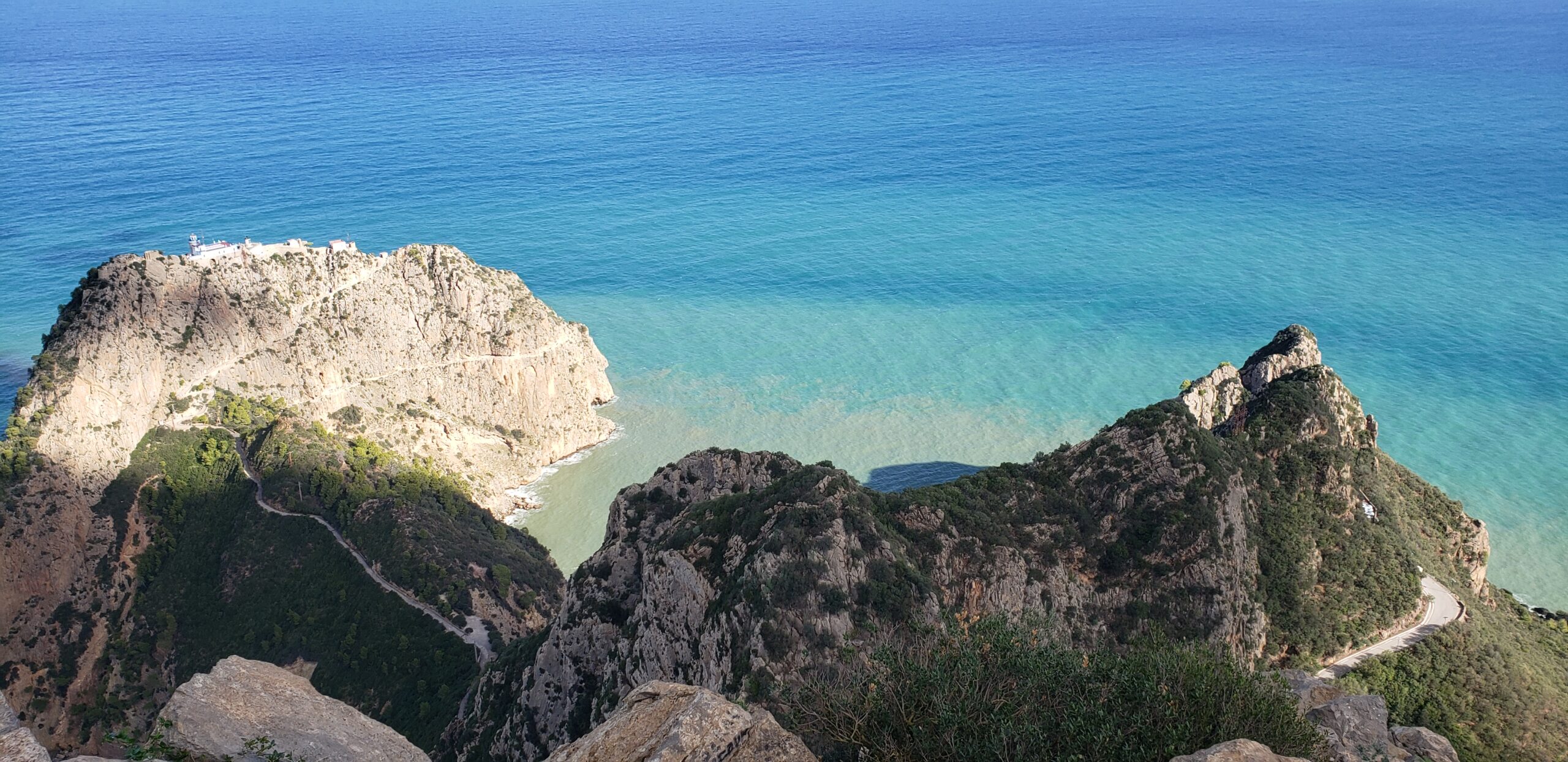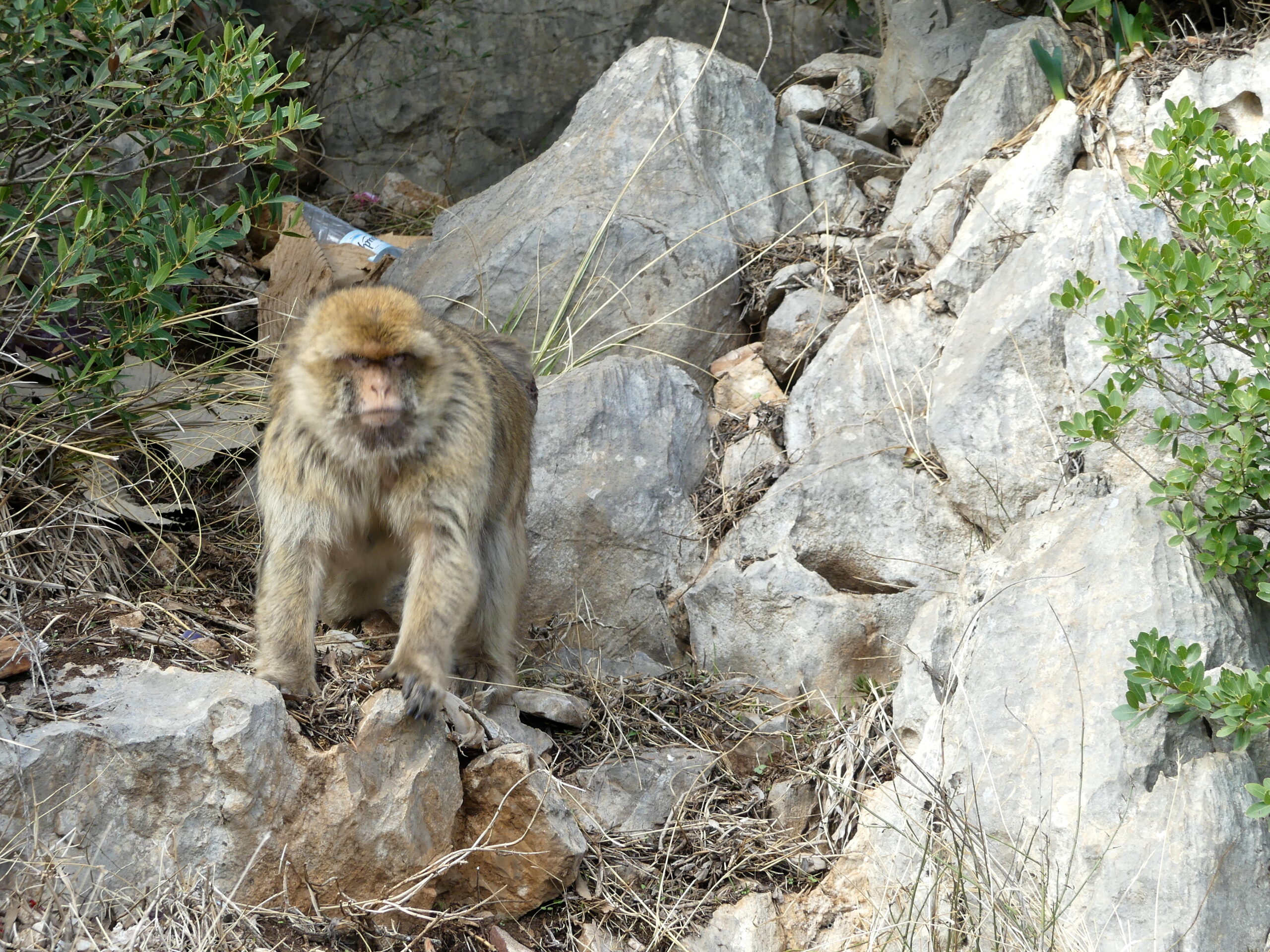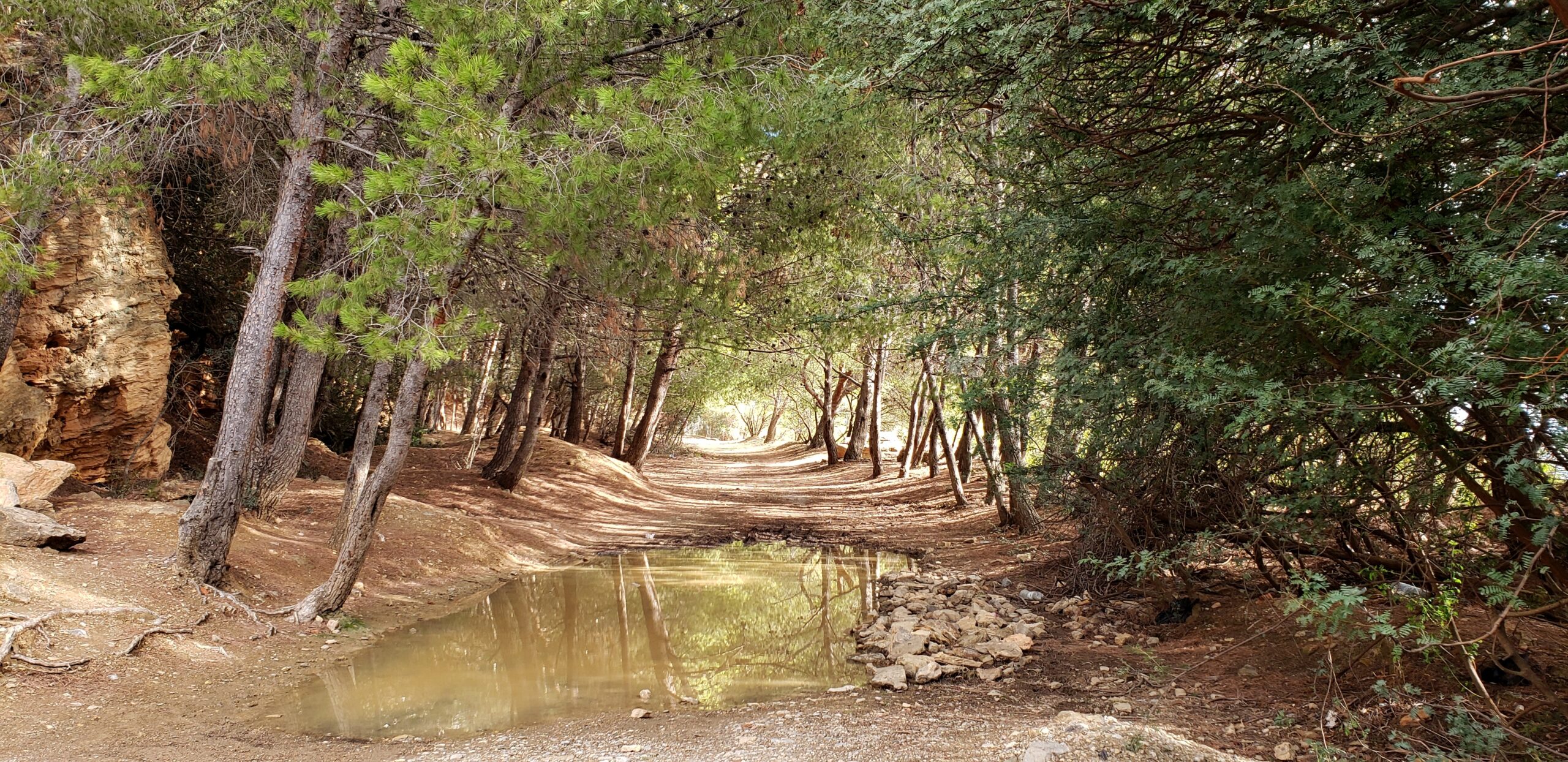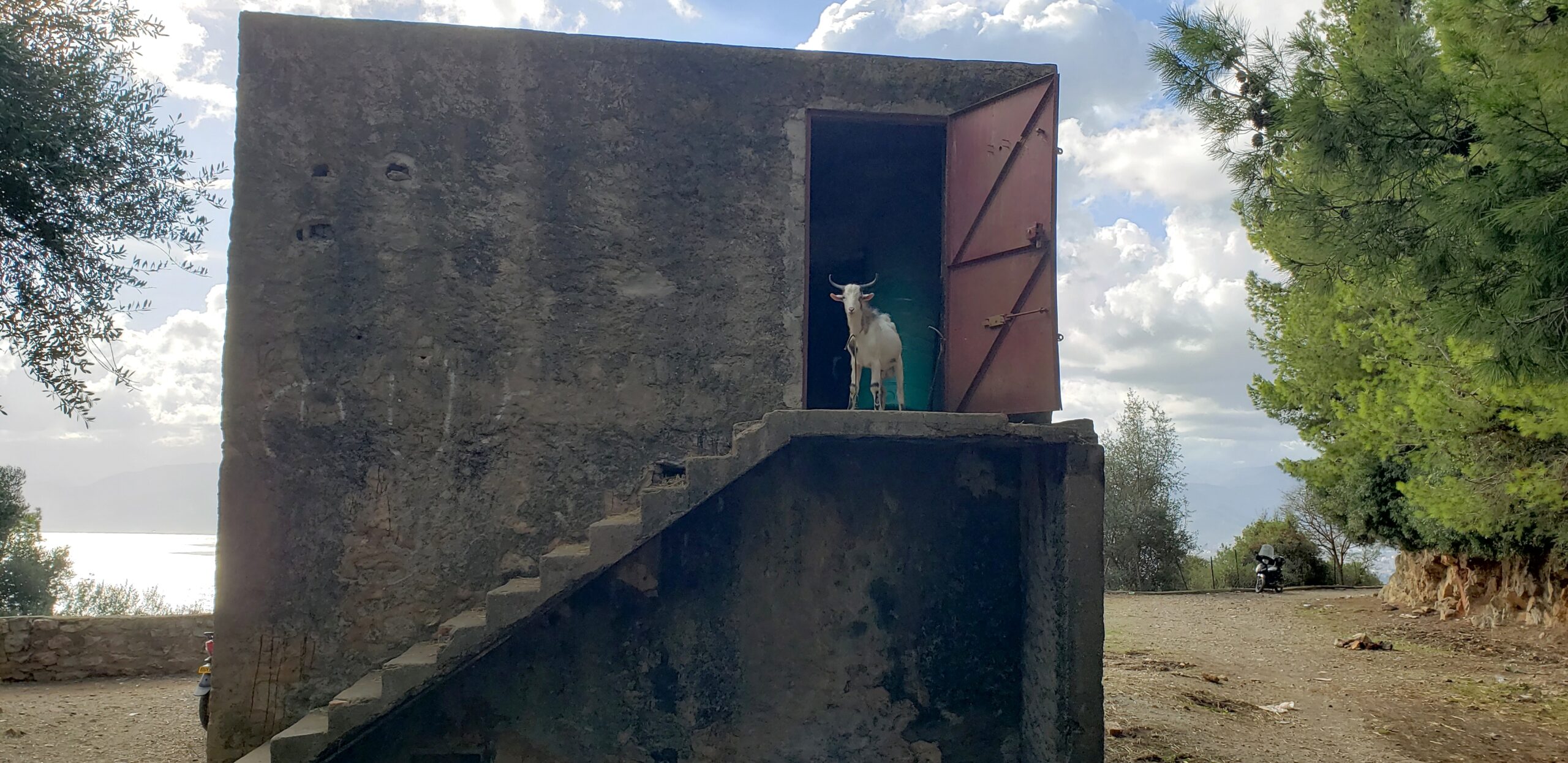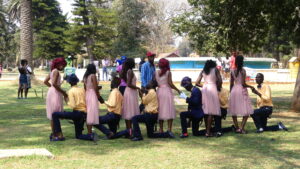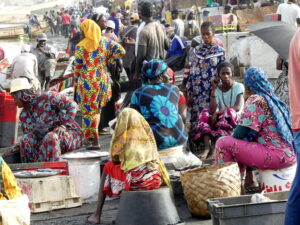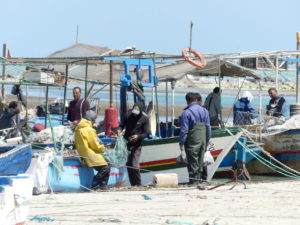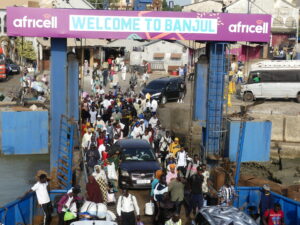Our month in Algeria brought us to three cities on the Mediterranean in addition to Algiers itself. Annaba held special significance for us as the home of the religious philosopher St. Augustine (Click here to read that post). The other two showed very differently, with one “turning its back on the sea” in the words of Albert Camus, and the other thoroughly directed toward it.
Oran
To us, Oran, a major shipping port and commercial center, seemed to share characteristics with Marseille just across the Mediterranean: a city mingling the glamor of wealth with the roughness of a port city. It’s an odd landscape, with the city built high above the water on bluffs. As a result, the French-Algerian writer Albert Camus, whose masterpiece The Plague is set in Oran, felt that the city had relinquished its shoreline to commercialism and industrial activity, in effect turning its back on the sea. Hardly its best promoter, he also called the city the capital of boredom. To him, however, Oran represented the modern world, with all its materialism, pettiness, fearfulness, and moral failings, but ultimately also the potential for resilience, courage, and love. During our stay, we observed Oran’s modern flaws, but experienced plenty of its embrace.
The drive to Oran from Algiers is not so long, maybe four to five hours. But our agent here suggested we take the train, for a local cultural and visual experience. The recently built train car was quite comfortable and clean, though we needed to endure some very rambunctious children for most of the trip. Other Algerians brought food along and picnicked at their seats; we fit right in, as we brought some bread, cheese and fruit for the same reason. As for the visual experience, that was not so fine. The Saharan dust seemed to have permanently coated the windows, so we could see very little outside unless we peered through the exit doors. When we could see the passing landscape, the gentle hills, farmland, and stations were quite attractive.
One other reason to take the Algiers to Oran train is the opportunity to see Oran’s neo-Moorish Gare-Centrale from 1913. It imitates mosque design and alludes to all three Abrahamic religions inside, though Islamic motifs dominate the halls and stained glass windows.
This little girl was fascinated by us as we admired the beauty of the waiting room of Oran’s Gare-Centrale. We don’t know what she meant by that sign with her fingers, but she charmed us a lot – even before we noticed the homage to New York on her shirt.
In the rest of Oran, we found traces of a half millennium of outside influence: the Spanish, Ottoman, and French
In 1492, the Spanish were not content with chasing the Moors from Spain. A few years later (after first landing in Bejaia) they invaded northern Africa, occupying Oran and other areas for nearly three centuries before eventually ceding the outpost back to the Ottomans. High atop the hill that oversees the Oran harbor and looks far out into the Mediterranean, they built the impenetrable garrison of Santa Cruz. At the summit of a steep climb, it now offers a dizzying view past the restored chapel of Santa Cruz out over the modern port. The Spanish influence is still evident today throughout the region, in cuisine, buildings, and genetics.
The formidable walls of the Santa Cruz fort built by the 16th century Spanish invaders now surround a bare interior with many secrets. A series of tunnels led down and into the city, as well as to two other forts. That system let them shift resources to make them seem more numerous than they were, as well as exchange other critical needs. The tunnels might be opened in the future for tourist exploration. Also, an elaborate water collection system let the Spaniards hold out against a siege for a long time.
On this jutting piece of the Bey’s palace perched the suite of his favorite concubine. She, not his wives, had the sweetest suite and the best view over the old city.
To visit the suite, we passed through a small garden at the left, one that isolated it from the rest of the palace. That led to a greeting room, bedroom and the viewing terrace at the tip of this promontory. Though the suite was in a bit of disrepair prior to restoration, you could still imagine the luxury and privilege she merited, at least for the time she remained the favorite.
Baba Hassan Pacha, the Ottoman-era Bey or governor of the region, would enjoy this view of the old city of Oran from the terrace of his concubine. The Ottoman-style octagonal minaret dates from the 1790s, when he built the mosque to celebrate the ousting of the Spaniards after three centuries of control. We were able to enter the mosque and enjoy its charming tile decoration. In the center of the prayer hall was the large raised platform which the Bey climbed for prayers.
This steep street gave us the best feel for the old city of Oran, and the texture of life along its hills. This was not the part of town that the colonial French cared to occupy; they built along the valleys and flatlands of the city.
The French colonial influence on Oran is evident across the city, most elegantly in this grand opera house from 1907. It graces one side of a large plaza that was once called the Place d’Armes. Another side of the square features the massive hulk of the much more prosaic city hall from the same vintage. A tree-lined park proceeds from the third major side of the plaza, along which sleek new trams carry people across town.
In the square, an obelisk topped by the goddess Victory celebrated the French military success over the Ottomans and its occupation of Oran. After independence, however, the obelisk was repurposed by adding an image of the first freedom fighter against the French, Emir Abdelkader. And the plaza was renamed 1st of November, the date of the formal 1954 demand for independence from French rule, the start of the revolution that ended in a different victory eight years later.
This is a typical French colonial building along the palm-lined main street of central Oran, the Boulevard de la Soummam. French hotels, banks and other commercial buildings made this a kind of Parisian Rue de Rivoli or Champs Elysees, along whose three blocks ambled local boulevardiers. During the 1950s war for independence, it was instead a main gathering place for freedom fighters.
Earlier, in 1940 and 1941, Albert Camus would have walked this street to enjoy the open air cafes at the lower end, while he lived here with his Oran-born wife. We visited one of these cafes, but felt it had lost some of its 40s appeal with its garish promotions of pizza and fast food.
Here is the front of a private club from the 1920s and 30s, a period of extensive investment and construction by the French in Oran, including financial buildings, villas, synagogues, etc.
We had a sense that Oran was a lively outpost for the French-Algerians during that period. Within a few decades, though, WW2 and the revolutionary zeal for independence by the Algerians began to overturn those privileges.
We had several pleasant encounters with people in Oran, who were curious about us and also warmly welcoming. One day, we explored the area around our hotel, an old neighborhood to the east of central Oran along the shoreline. In addition to large villas, specialty shops like this one attracted our attention. The cheerful owner was once an accountant, but gave that up to study cheese making in France and create chevre and other cheese specialties back in Oran. After much conversation about his career shift and our lives, we bought one of his bouches. That, along with a few extras he graciously offered us, provided us a splendid picnic the next day.
This was one of the fine villas we found during our walk near our hotel in Oran. A lot of development has added new hotels and educational buildings to the district, so it’s a pleasant area. We even found a shop that sold giant plush bears.
However, the long promenade atop the bluffs overlooking the sea has not been well maintained. In keeping with Camus’s description of the town, perhaps few use it anyway because it’s necessary to race across a busy six lane roadway to reach it. Time for some urban re-design, we thought.
Bejaia
Bejaia, a few hours east of Algiers along the Mediterranean, was our very last visit in Algeria after short stays in several other northern towns – Setif and Batna. Each showed us how inviting they and their people could be. Bejaia, in addition to the charm of French colonial style and Ottoman/Berber history, offers a bay with a seemingly endless coastline of black sand beaches arcing toward a rocky peninsula whose peak floats over the city. Like most other coastal cities here, much commercial shipping takes place in the heart of town. Other than ponderous truck traffic near the port, however, there is plenty of lovely shore to savor. What a great way to finish!
The road to Bejaia from the south is a wondrous passage that begins in desert, winds through forested mountainous valleys, then drops onto the seaside beaches. We experienced rainy, dark conditions for much of it, but were delighted when the sun lit up the view.
During the summer, Algerians throng these 70 kilometers (50 miles) of broad beaches in Bejaia bay, in sight of the peninsular headlands of the national park.
One section of the Bejaia waterfront consists of a pleasant promenade with a number of restaurants specializing in fish, naturally. On a sunny but cool day, we so enjoyed the fishing boats and residents dawdling here.
Part of the old city walls of Bejaia from the Ottoman period after 1600. The town was then a haven for Berbers and Moorish/Jewish exiles from Spain. The region was known as the Barbary Coast (from the term for native Algerians, Berber). The dominant naval force at the time comprised the fast-moving ships of the predatory Barbary Pirates.
Though reconstructed over 120 years ago, the elegant Sidi Soufi mosque dates back to the 16th century and liberation from the Spanish invaders. It dominates a very French colonial plaza. Just below it lies one of the old city gates. Five hundred years of history in one place.
We had become accustomed to seeing long stretches of French colonial buildings in the cities of Algeria. In Mediterranean cities like Bejaia and Algiers, they often gaze onto the waterfront.
At the end of Bejaia’s bay rises the verdant national park of the peninsula, Gouraya, offering spectacular hiking and viewpoints like this – a true refuge within the city. The mountainous region behind the city, through which we drove to reach it, makes for a beautiful setting.
We just finished climbing through the peninsula to its peak, the legendary hermitage of Gouraya. He was said to be a holy man who resisted the invading Spanish. Because of its unmatchable outlook over the city and sea at 660 meters (2200 feet) high, the Spanish and later the French built a fort here. Like us, many Bejaians hike up, not for the derelict fort, but for the panoramas.
Roads and trails descend onto two spurs of the peninsula as it drops into the sea. Jutting out to the left is Cap Carbon, with a military cluster on it. To the right is Pic des Singes (Monkey Peak), named for the monkeys that actually abound all over the peninsula. But it also feels like a place to perch for a while –as the clouds scatter turquoise shadows across the water and the undulant peninsula plays with the sunlight.
A Barbary Macaque at Gouraya National Park glares at us as we head toward Monkey Peak. These monkeys are endangered and endemic to north Africa, so it’s a privilege to see them despite the scowl of a greeting. Bejaia is part of the famed Barbary Coast of north Africa, so called from the colonial name for the indigenous people, Berbers.
Within the park, we had the chance to follow a corniche lower down from the peak of the peninsula. The reward was this lovely bower, with a pool from a strong rain the day before. At the end of the trail, we were blocked by a tumble of sandstone boulders fallen from the face of a towering canyon wall.
Something about this resident goat made us laugh, both during our corniche walk and in reviewing pictures later. Much less threatening than the macaque, he still made us wonder whether he was on guard duty atop this small stone hut or was just curious about us.
(To enlarge any picture above, click on it. Also, for more pictures from Algeria, CLICK HERE to view the slideshow at the end of the itinerary page.)


